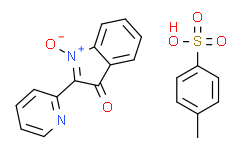PIT (0.1-10 μM) non-competitively and dose-dependently diminishs human P2Y1 receptor signaling with an IC50 value of 0.14 μM.
PIT (0.1-10 μM) completely blocks the agonist activity of 2-MeSADP.
PIT (1 nM-10 μM) dose-dependently inhibits the accumulation of inositol phosphates induced by the agonist 2-MeSADP.
PIT (1 nM-10 μM) dose-dependently blocks the P2Y1 receptor signaling induced by the endogenous agonist ADP.
PIT (0.1-3 μM) increases ATP-responses 2-5 fold, while higher concentrations (3-100 μM) inhibits ATP-mediated inward current with an IC50 value of 13.2 μM.
PIT shows a low affinity for a range of membrane receptors, including: α1, α2-adrenoceptors, 5-HT1A, 5-HT1B, 5-HT2, 5-HT3, D1, D2, muscarinic, central benzodiazepine, H1, μ-opioid, dihydropyridine and batrachotoxin receptors with pKi values of <5.
PIT shows affinity to an adenosine (A1) receptor with a pKi value of 5.3.
PIT (12.5-50 μM) irreversibly antagonizes relaxations of ATP in guinea-pig isolated taenia caeca.
Medlife has not independently confirmed the accuracy of these methods. They are for reference only.



 扫码关注公众号
扫码关注公众号